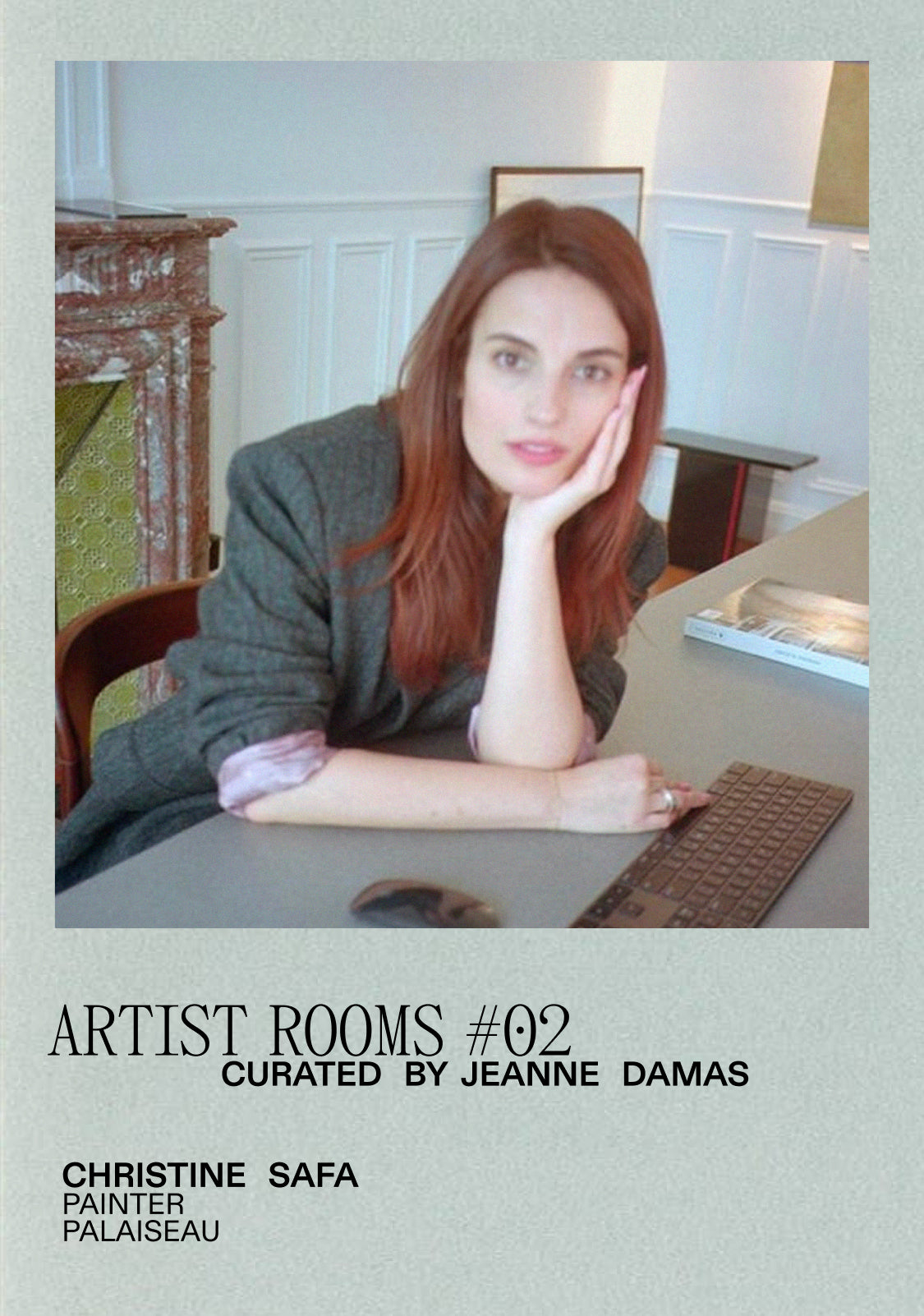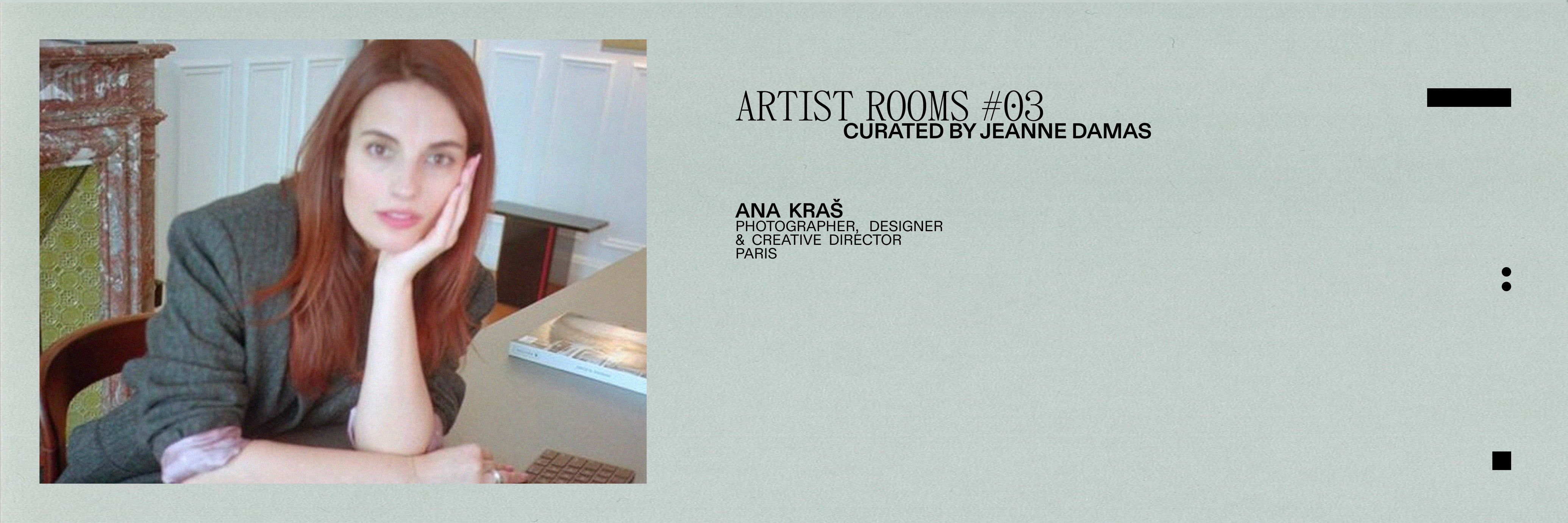
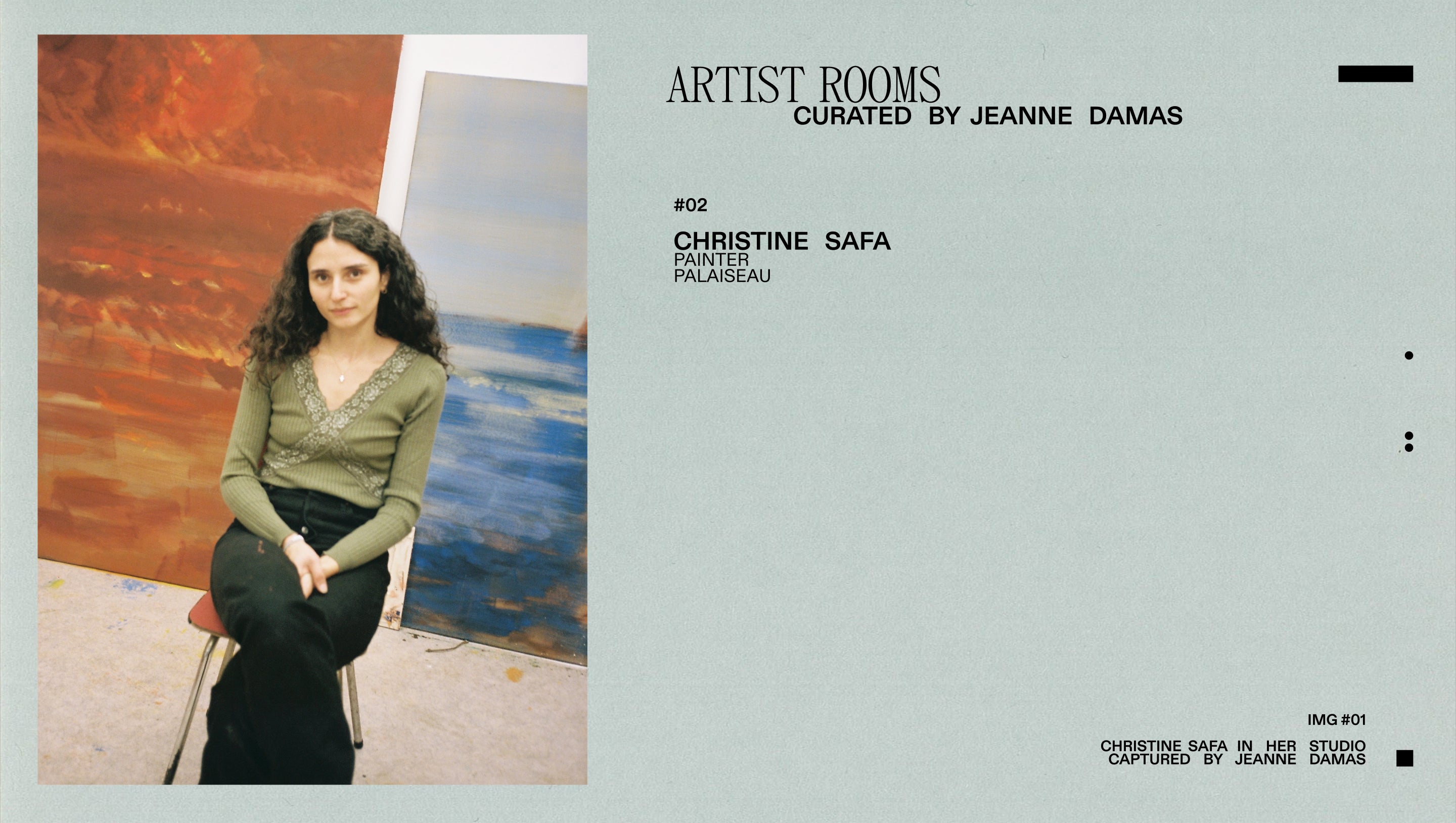
INTERVIEW
JD: Your work delves so much into the personal—your travels, memories—which resonates with me deeply.
How did you first start painting?
CS: I feel like I’ve been painting forever, at least since childhood. Whenever I had time beyond studying, I’d be painting and drawing.
JD: In Lebanon?
CS: I was born in France and grew up in the Paris suburbs. But I went to Lebanon four times a year, almost every vacation. I spent so much time there. Like many kids, I was given crayons to keep me busy—and I was always drawing. Later on, my parents never pressured me to pursue a specific field. They just said, “Get your diploma, and then follow what you enjoy.”
JD: Are your parents artists?
CS: My father works in insurance, and my mother trained as a special education assistant—so they're not involved in the art world at all. In Lebanon, maybe an aunt or two are into art, but it’s not something that was really passed down to me. However, there are so many religious images, statues of the Virgin Mary, and icons everywhere in Lebanon, along with lots of ruins. That likely shaped me in some way.
Even today, I’m fascinated by ancient sites and the old civilizations of the Middle East. After high school, I wanted to take preparatory classes for art schools, which allowed me to study at the Beaux-Arts de Paris for five years.
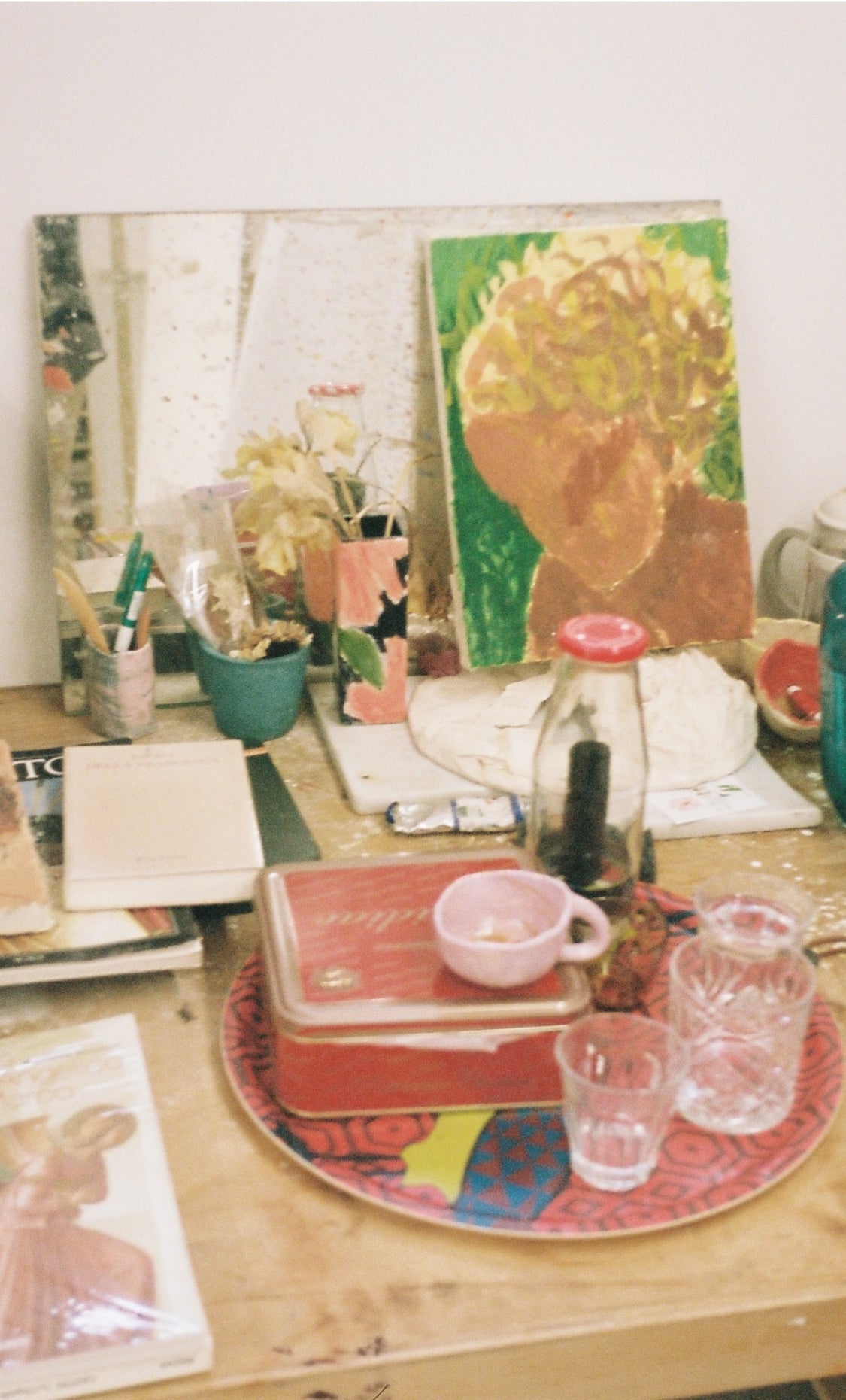
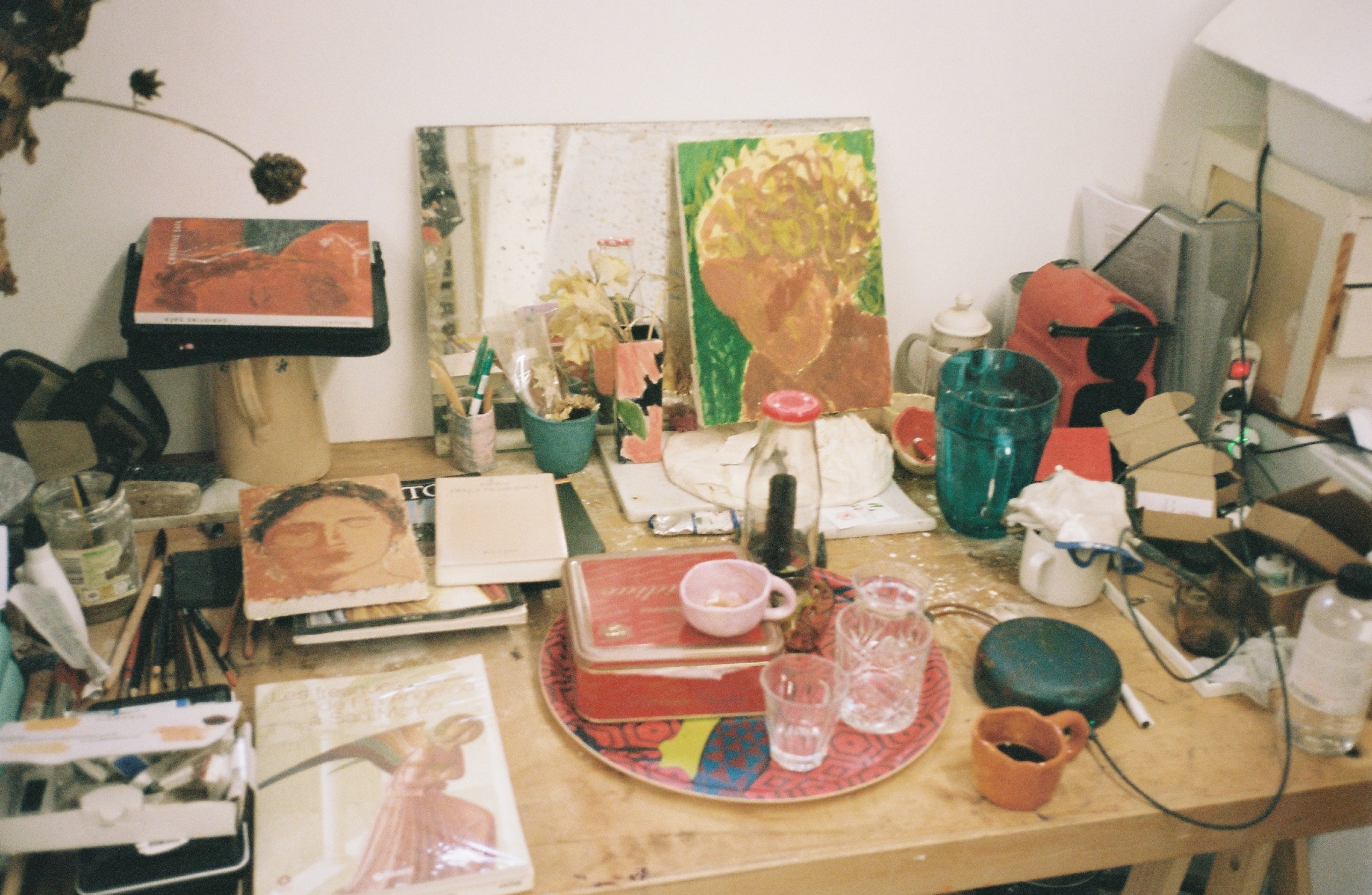
IMG #02
Christine's table with some of the books she often looks at: Fra Angelico and Giotto, and the catalog of one of her exhibitions
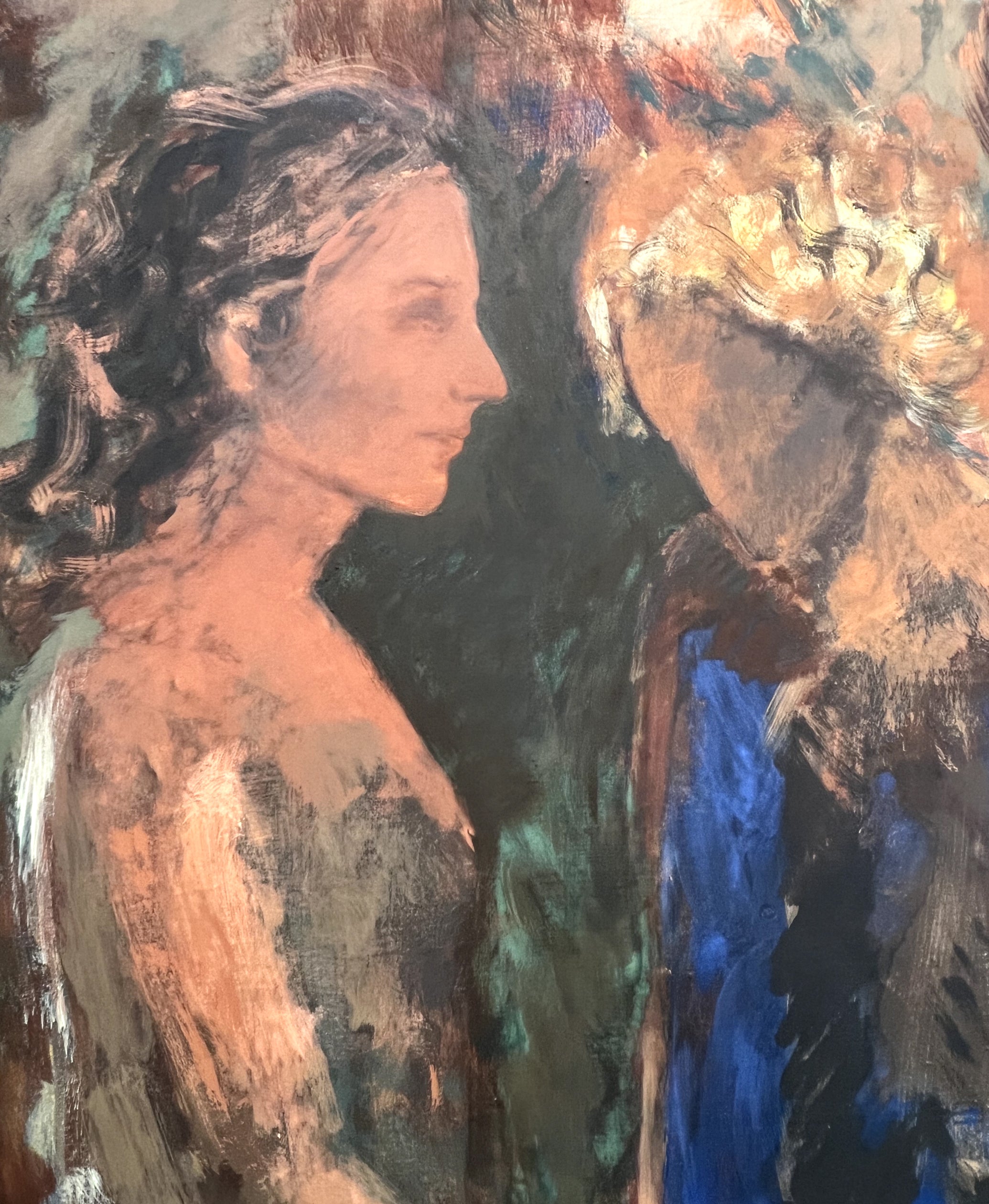
IMG #03
detail of a painting in progress: Christine and her fiancé Nathan
JD: What was that experience like? Is it very structured?
CS: It’s very open-ended—you either find your own structure, or you can get lost and end up leaving. It’s a school where
you’re learning everything at once, including getting to know yourself! I was quite reserved when I started; I was still young, only 18 or 19. As an only child, I was pretty sheltered. For me, the Beaux-Arts was an eye-opener, a
window into a world I only half-knew.
JD: How so?
CS: I was really searching for myself, both as an individual and as a painter. Early on, my work was more political. I
entered the Beaux-Arts with pieces focused heavily on Lebanon, the war—topics that weren’t entirely my own, since I was only there during holidays. There was, of course, a lot of sadness, but I always had the option to return to France. At the Beaux-Arts, I was quickly told I should be addressing everything happening in the Middle East.
JD: So they wanted your work to be more political, more engaged?
CS: I'm not sure if it was necessary, but for about two years, my work was focused on that—war, raw images. Over time, through connections I made at school, I realized that just being in that environment was already a political statement. For example, I met the painter Nathanaëlle Herbelin, who is Israeli. I wouldn’t have crossed paths with her if I’d stayed in Lebanon or within a more closed circle in Paris. She was a couple of years older than me, and I was fascinated not only by her work but also by her journey, which was similar to my own.
JD: Did these encounters influence your work?
CS: Absolutely. I started questioning whether I needed to paint literally what was happening in that part of the world or if I could allow myself to paint something different. Why shouldn’t I be honest and create things that reflect more of my own experience, rather than what I feel is expected?
I’m not a journalist; it’s not my role to document current events. I grew up in France, and I go to Lebanon for family, for love, sunshine, and joy.But there’s this contradiction. I know Lebanon has a difficult history. Either I’m there and truly share in what people live day-to-day, or I’m here and experience it all vicariously—a sorrow that unfortunately passes from generation to generation.
"I started questioning whether I needed to paint literally what was happening in that part of the world or if I could allow myself to paint something different."
Christine SAFA
JD: How did you navigate that duality growing up?
CS: As a Lebanese, I’ve come to embrace that sense of inherited connection. I was lucky to grow up here with this other culture as well. I went through phases where I saw myself as only French, then only Lebanese. Finding a balance between the two has been a recent development for me.
JD: Was it your parents or grandparents who first came to France?
CS: My parents. It was during the Gulf War, and my father was already working in Saudi Arabia. They got married, lived there for a year, and then he accepted a position in France. They didn’t go back for a while, but now they split their time between both places.
JD: Is their heart still in Lebanon? Do they go back often?
CS: Yes, they were just there in September but had to return somewhat urgently given the situation. They spent four months in Lebanon. The Christian neighborhoods aren’t targeted for now, but they still hear the explosions. They see it. It’s like a sad routine. Today, it’s even more intense—the weapons are far more advanced, more devastating. Since I was young, we’ve never left Lebanon thinking it would be fine when we returned in two months; there’s always a sense of uncertainty. I think my own bond with Lebanon comes from watching my parents’ love for the country and feeling that heartbreak every time we left.
JD: That must be very impactful.
CS: My parents always spoke of Lebanon with such beauty. I wanted to pay tribute to the country by painting things that
truly belong to me, drawn from my memories there. So I quickly began focusing more on Lebanese landscapes.
JD: That warmth really comes through in your colors—they’re so vibrant.
CS: Over time, I’ve realized that a big part of my life is here in France too. Recently, I think you can also see more neutral shades or just different tones from what I used to choose. Before, people could almost label my work as orange, blue, red.
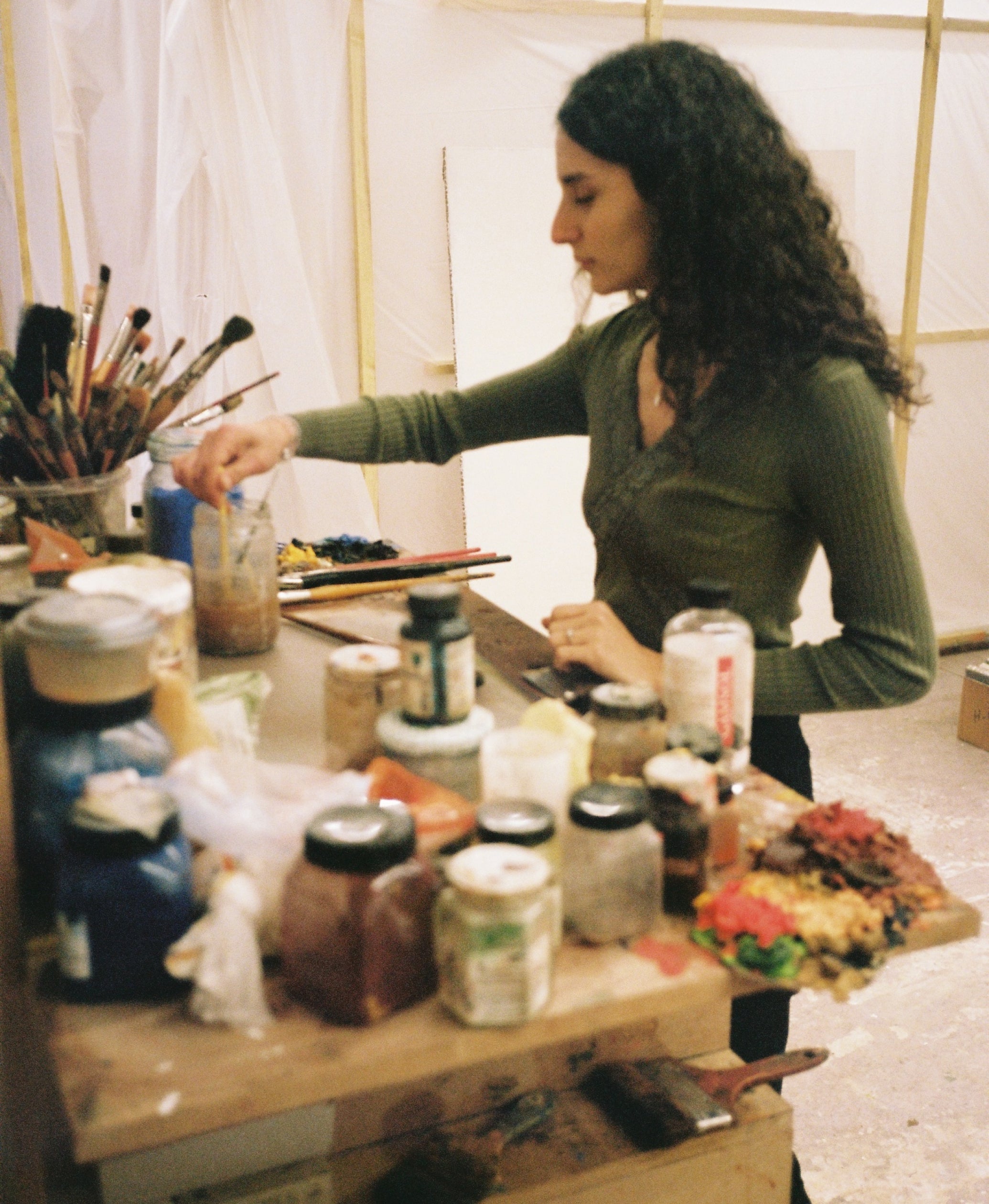
IMG #04
Christine Safa at her work bench
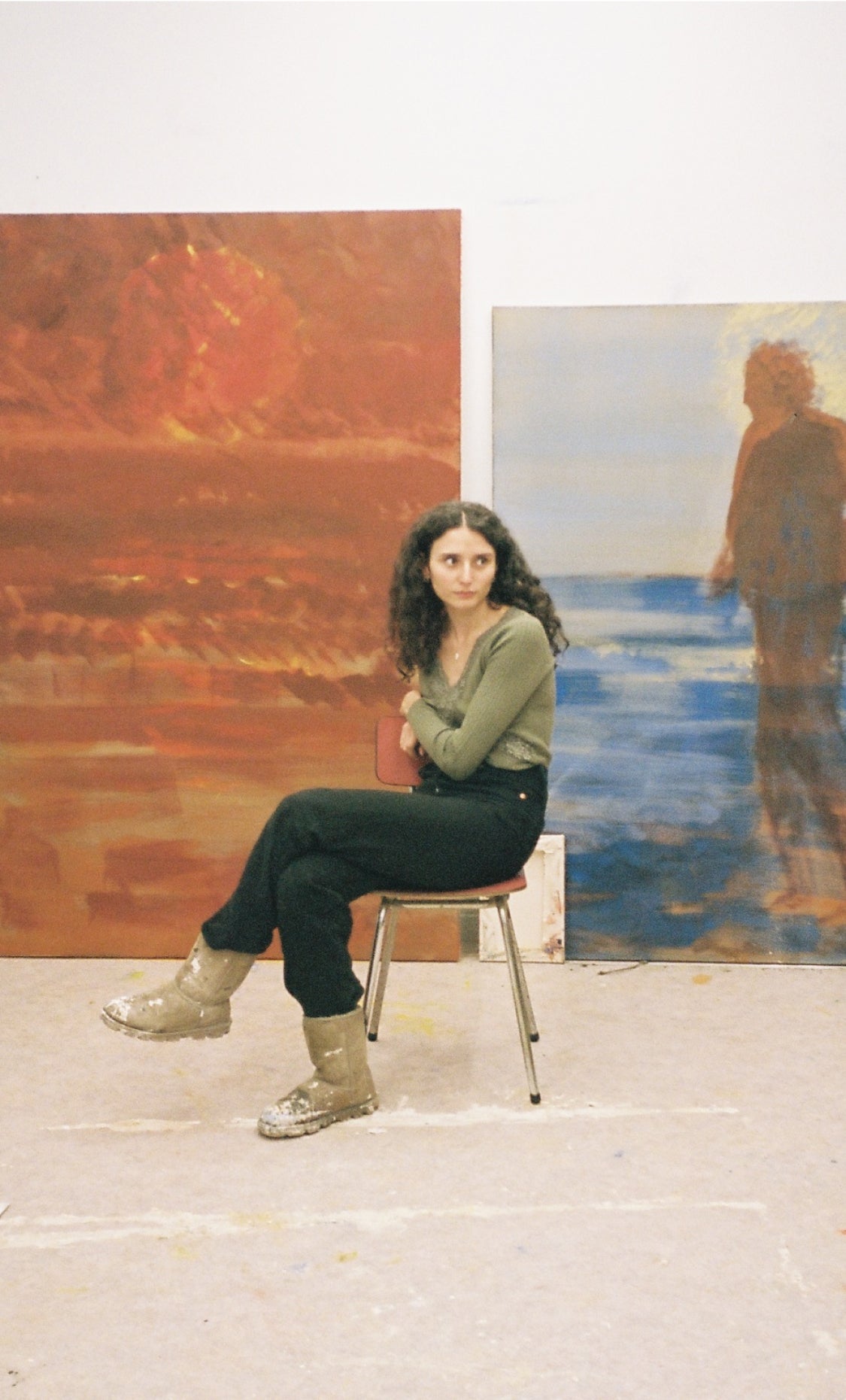
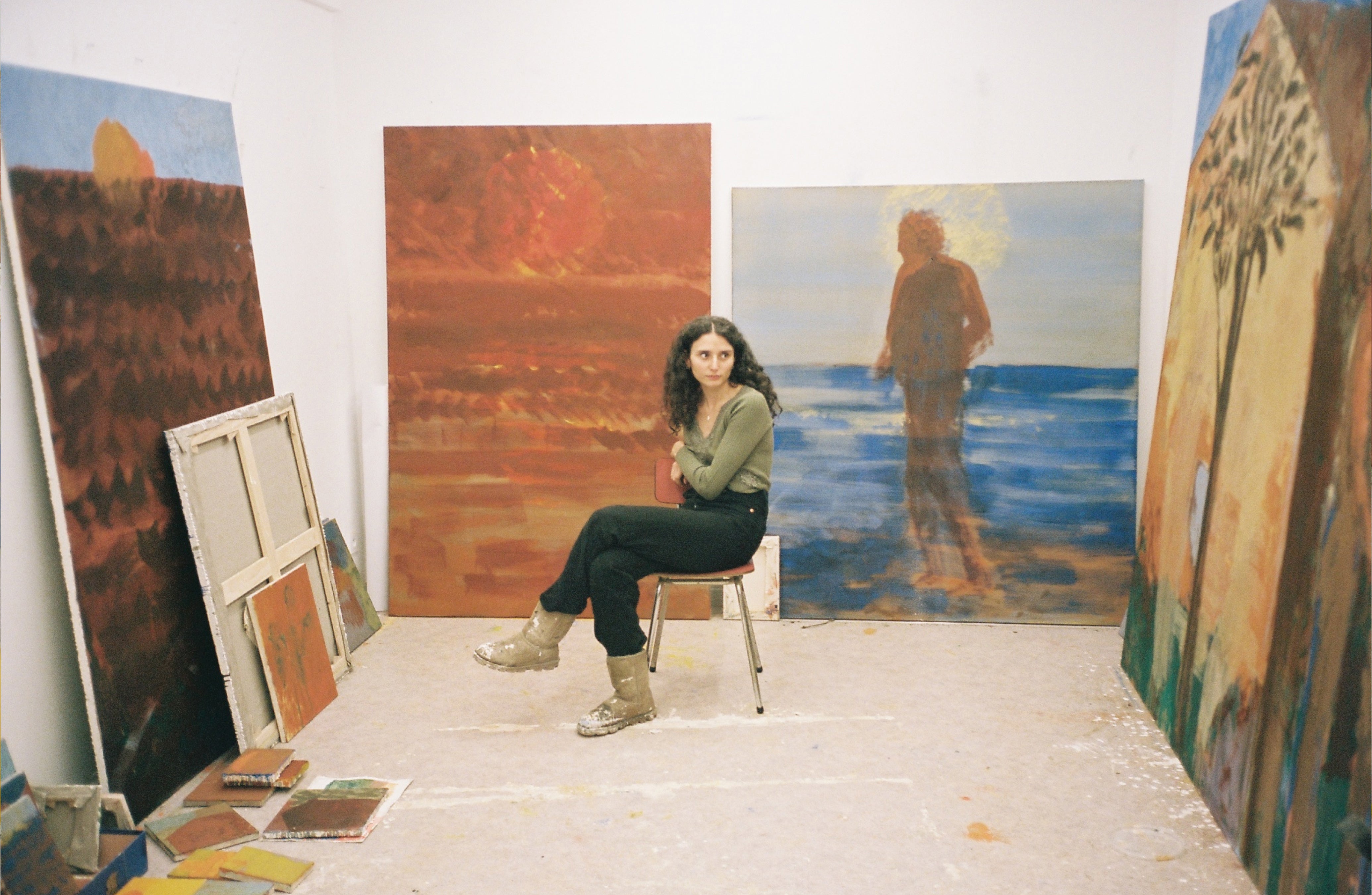
IMG #05
Christine among her paintings in progress
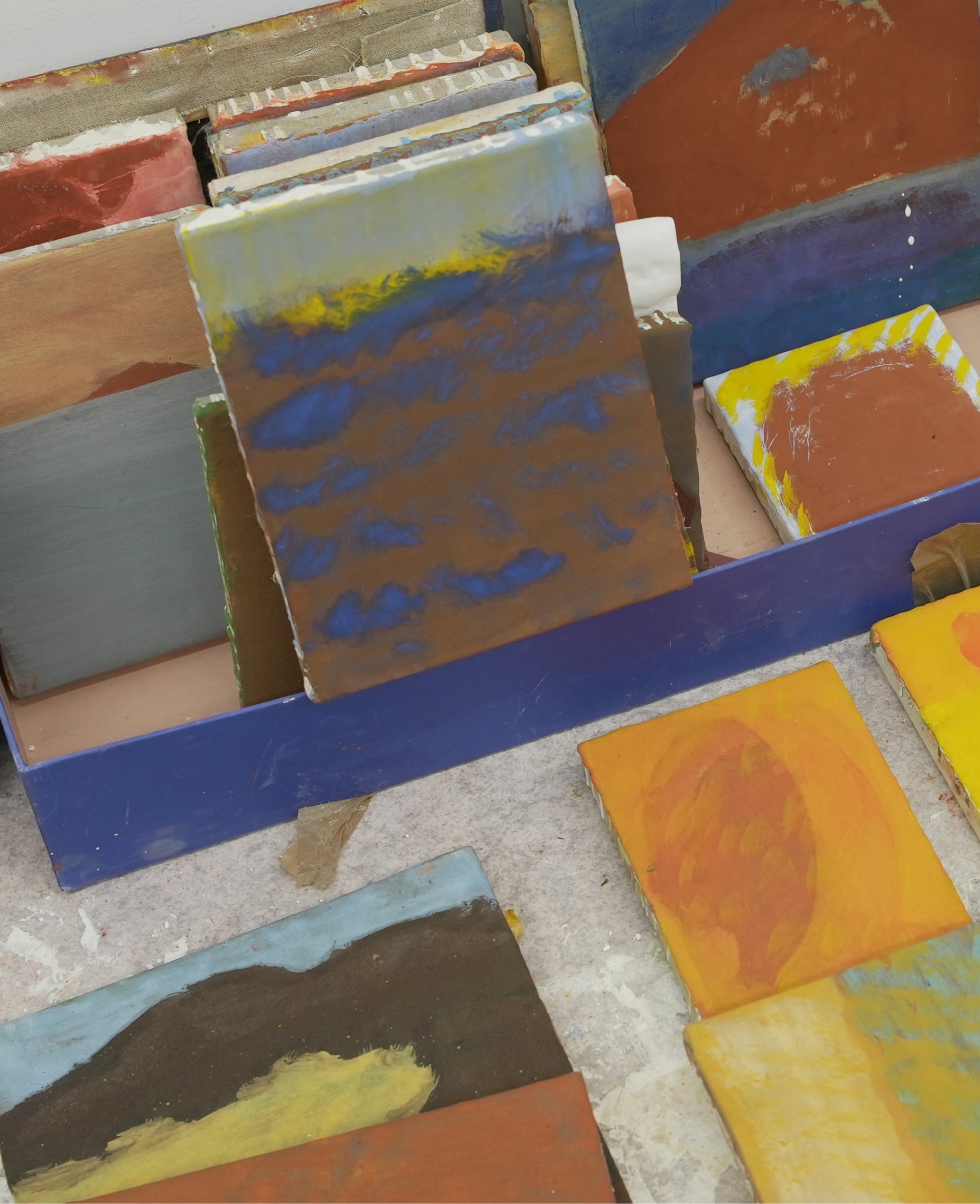
IMG #06
details of paintings in progress
JD: They’re also phases, aren’t they?
CS: With my fiancé Nathan, who is also a painter, we spent four or five months in an artist residency not far from here, surrounded by lush greenery. I don’t usually paint what I’m experiencing in the moment; it often comes later.
JD: So you paint a lot from memory?
CS: Yes, I take a lot of photos for inspiration, and I also find ideas in books.
JD: Is it to have more space and freedom afterwards?
CS: I realized in school that when I confine myself to a fixed image, I quickly get lost in details that aren't necessarily interesting. I often explore the same subjects to create a fresh take each time and give myself a bit more freedom. I don’t want to be limited to just one way of painting. I can do a realistic portrait, another that's much blurrier and more abstract. It also brings me mental satisfaction, knowing I haven’t missed anything. You can have different versions of the same painting, and each can be great in its own way. I can mix the figurative with the wild.
Not having to make a decision helps me accept my work. If one version feels too forced or literal, I can create a more evocative one. Both can appeal to me, as an artist and as a member of the public.
JD: Which painters resonate with you the most?
CS: I admire painters like Fra Angelico and Giotto—those monks from the Renaissance. On the other hand, I also appreciate much more abstract works, like those of Rothko and other minimalist American painters.
JD: Did you have any background in art history, or did you learn it all at art school?
CS: I knew nothing! I remember one day in high school, a teacher mentioned Jeff Koons, someone I had never heard of, and I felt really out of place.
JD: Well, you weren’t exactly immersed in it.
CS: True, I was familiar with the classics like Van Gog.
"My parents always spoke of Lebanon with such beauty. I wanted to pay tribute to the country by painting things that truly belong to me, drawn from my memories there."
Christine SAFA
JD: Your fiancé, Nathan Bertet, is also a painter. Do you work alongside each other?
CS: Yes, he has a studio just a few minutes away by bike.
JD: Do you often discuss your respective practices?
CS: Yes, our relationship really formed around our time at art school. The flirting, the conversations...
JD: Sounds like a lot goes on there!
CS: It's almost like a reality show, like Secret Story! (laughs)
JD: There’s a whole generation of young painters right now, and a vibrant scene has emerged. Are you all close?
CS: Yes, we are very close, like a small core group with each person branching out in different directions. There are
more of us, but there’s definitely a tight-knit group that's been getting some attention lately. Nathanaëlle does a great job of shining a light on our friends who may not be as visible. We don’t do this alone; everything we
achieve individually has been shaped in this school in a totally anarchic way. We’ve gone through so much together. I wouldn’t paint the way I do today if I hadn’t met Nathan (Bertet), Nicolas (Gaume) and Nathanaëlle (Herbelin).
JD: When did you graduate?
CS: Six years ago. Nathan graduated last year, and I think Nicolas did three years ago? We all crossed paths, which
sparked discussions, reflections, and reunions. It was great to have friends and artists who share similar perspectives, tastes—though sometimes not. We have similar sensibilities and admire the same people, but each of us has our own unique aspects that the others might not necessarily appreciate, and that’s how we ultimately differentiate ourselves.
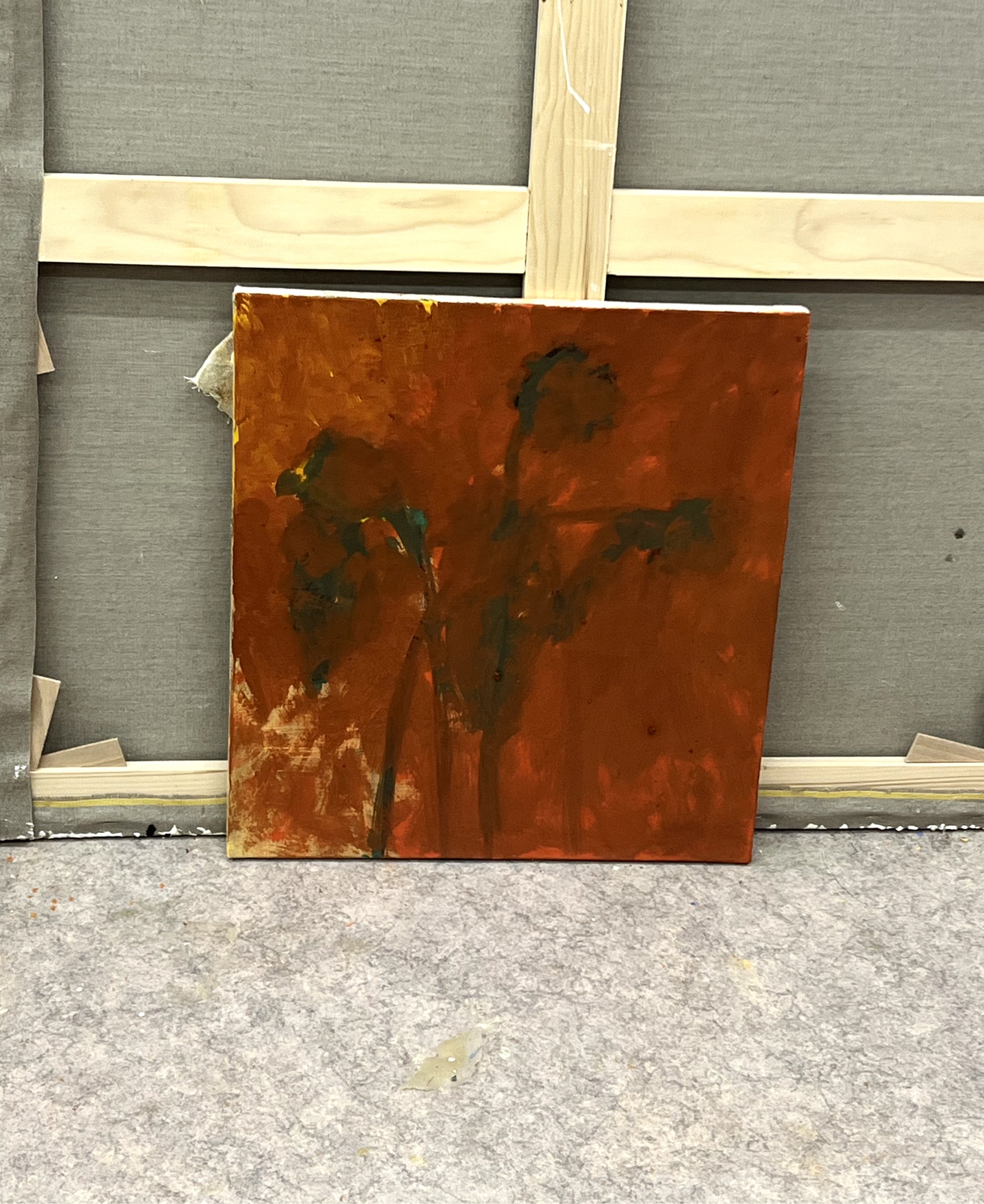
IMG #07
sunflowers painting, w.i.p
"I often explore the same subjects to create a fresh take each time and give myself a bit more freedom. I don’t want to be limited to just one way of painting. I can do a realistic
portrait, another that's much blurrier and more abstract."
Christine SAFA
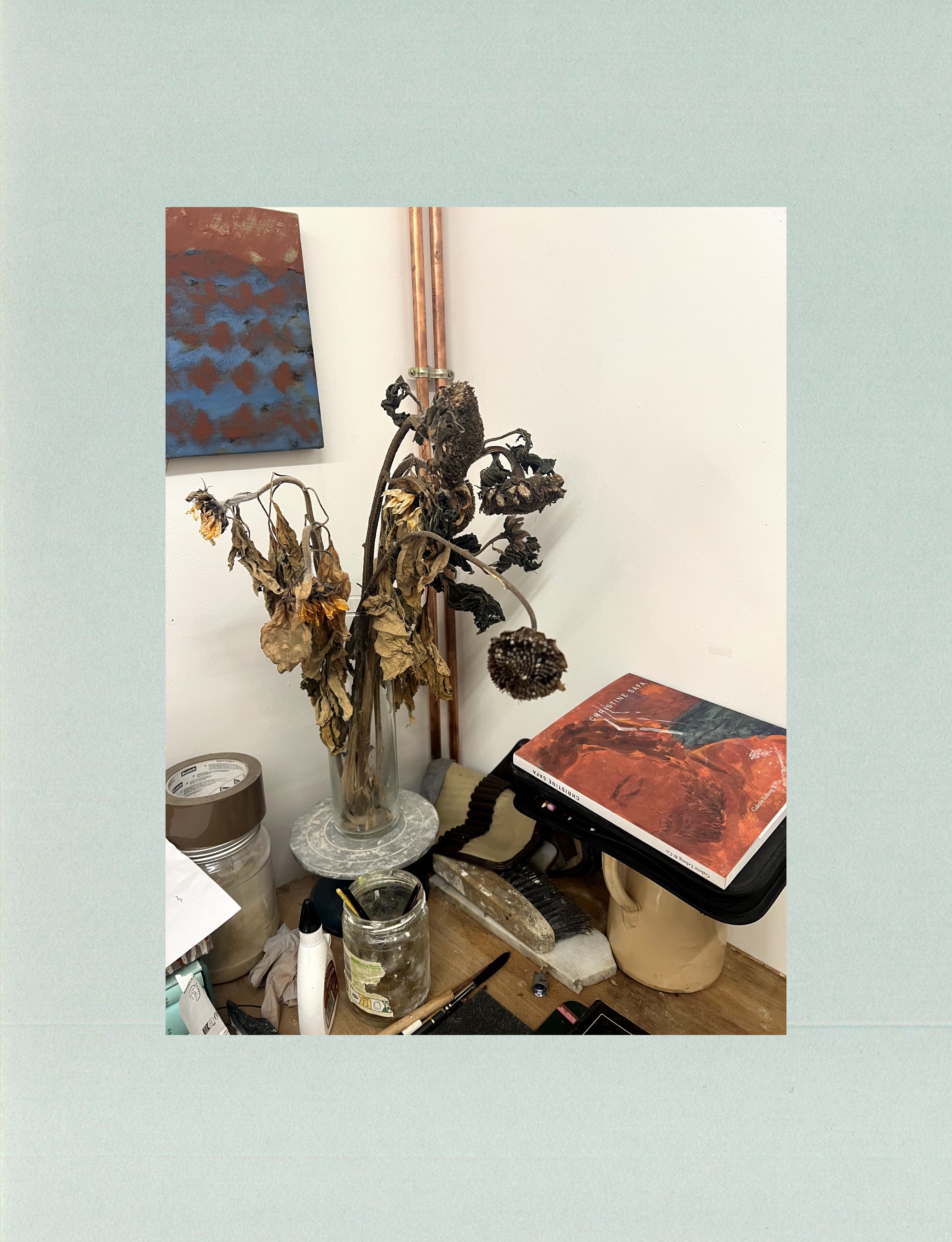
IMG #08
dried sunflowers, a gift from a friend, which she often paints
JD: What are you working on right now?
CS: I'm preparing a solo exhibition at the Lelong Gallery for fall 2025. I always try to have at least a year to prepare
for an exhibition. I need that time to conceptualize everything. I have to work on it; paintings don't just come together in a month.
JD: How long have you been working on this?
CS: I had an exhibition in New York a few months ago. It was a major show, my first solo in the U.S. I need time between
each big exhibition since they coincide with group shows and fairs. It’s natural to have to produce paintings from the studio throughout the year. So, I ask them to ensure I have a solid year to focus on painting. It’s usually only a few months before the exhibition that I know which paintings I’ll be displaying.
JD: Is it quite free-form? Is there a theme, or can you choose one?
CS: They allow me to work freely. Honestly, I don’t even know what I’ll be showing myself.
JD: Will there be paintings that you’ve never shown before?
CS: Yes, when it’s in a gallery, I only showcase brand-new works.
JD: How many do they ask for?
CS: The space is quite large. I typically provide 10 to 15 pieces. There’s a double portrait that will be included, and there will be a second one behind it. I haven't started that yet, but it will be the same size.
JD: Do you ever experience the blank canvas syndrome, similar to writers facing a blank page?
CS: I try not to find myself without anything in the studio. Whenever a big wave of paintings leaves for an exhibition, I make sure to have some canvases in progress. It helps me keep the momentum going and makes everything feel more fluid. I learned this after finishing school—it's important not to end up with nothing to work on.
Paintings courtesy of Christine Safa and Galerie Lelong & Co.
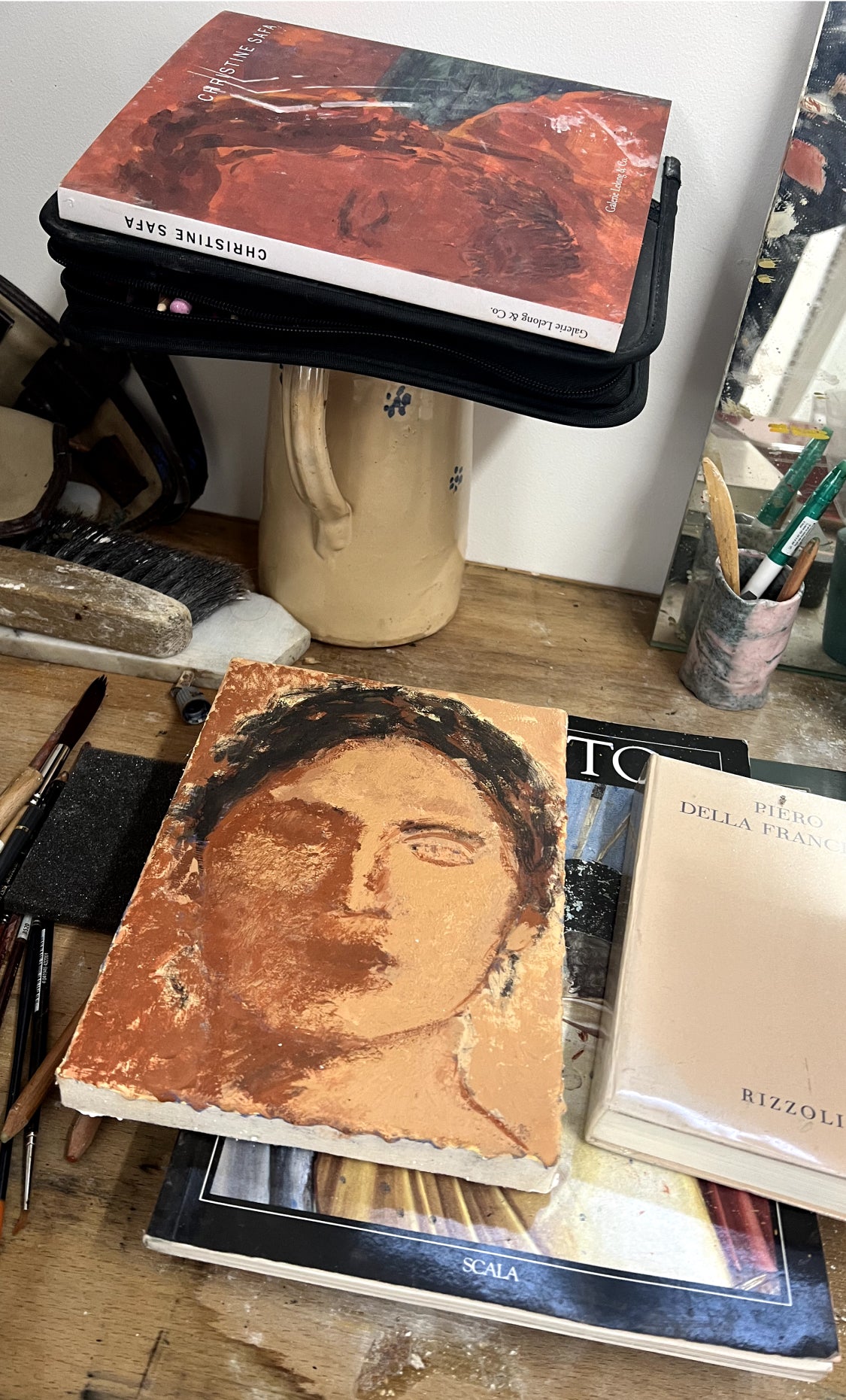
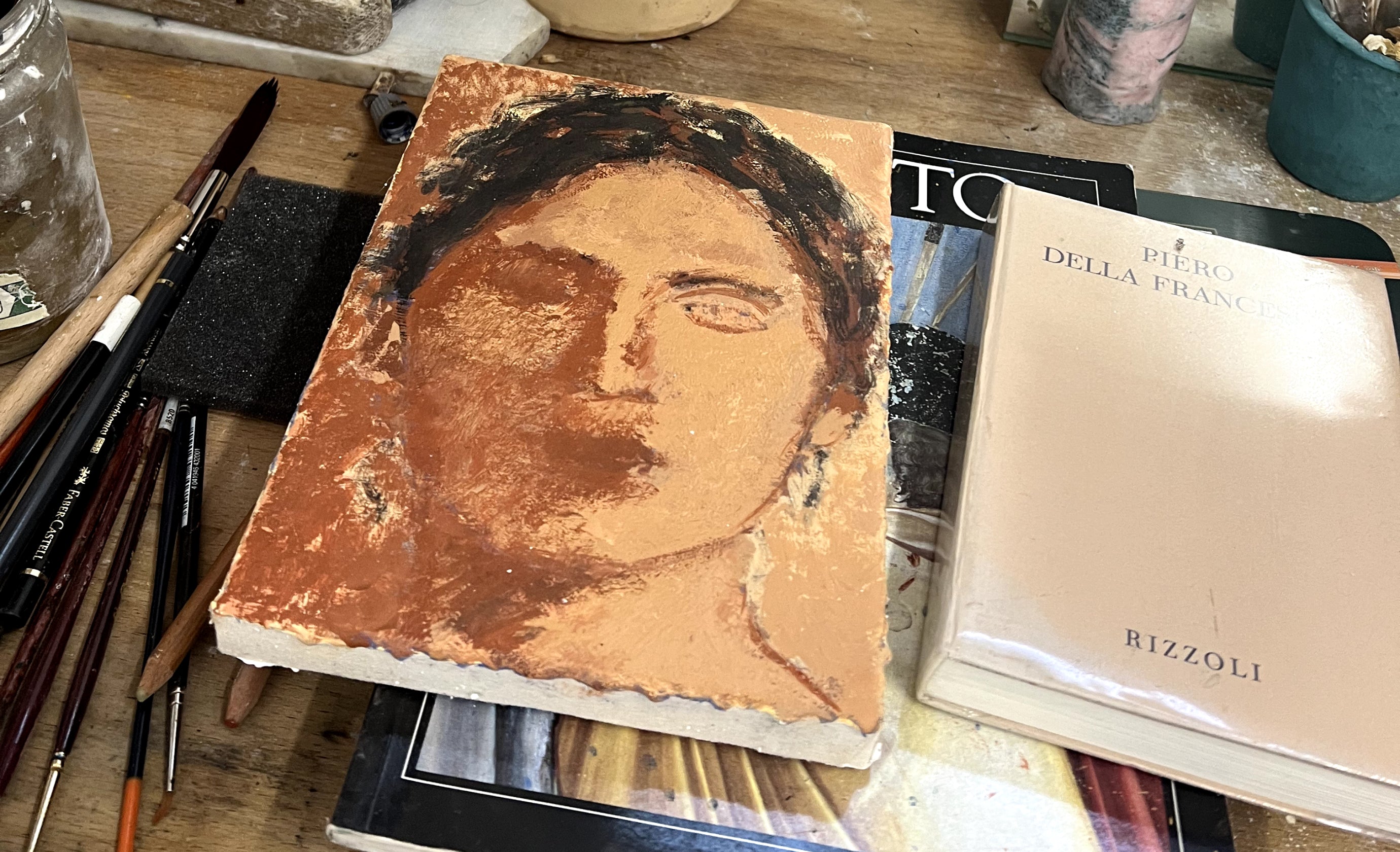
IMG #09
self-portrait in tempera, books by Pierro della Francesca and Giotto,
two Renaissance painters who greatly inspire her.
MORE ARTIST ROOMS
